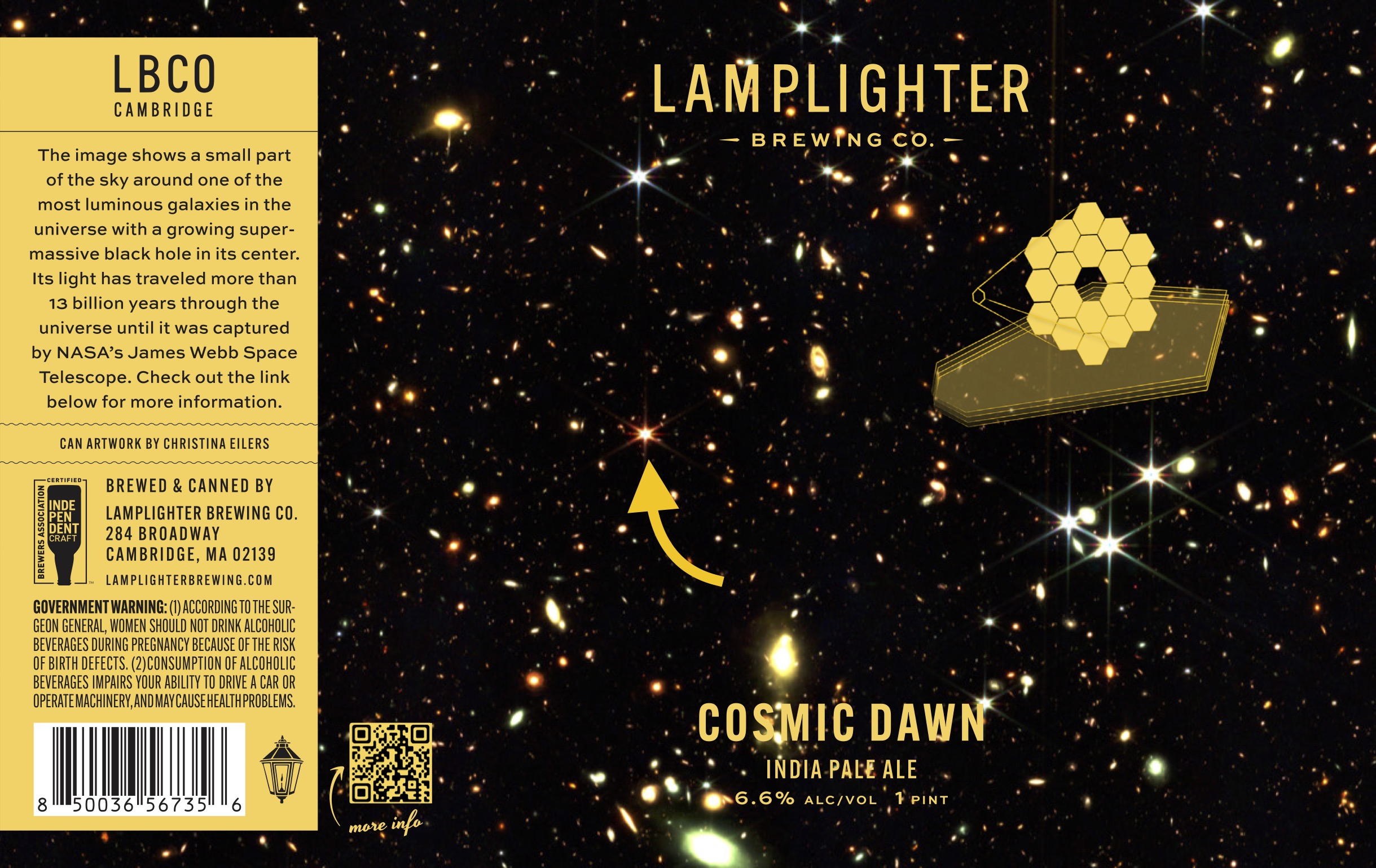The Cosmic Dawn of our Universe

The label on the "Cosmic Dawn" New England Style IPA by the local Lamplighter brewery features a small part of the sky (only the size of about one tenth of the diameter of the moon) around the brightest galaxy that astronomers know to date in the very distant universe. The location of the galaxy is indicated with a little arrow in the image above. This galaxy hosts a constantly growing supermassive black hole ten billion times more massive than our sun in its center. The accretion of material like stars, gas, and dust, onto this supermassive black hole makes the galaxy so incredibly luminous. Galaxies that host such accreting and growing supermassive black holes in their core are also known as quasars.
This quasar's light has travelled more than 13 billion light years through our universe before it fell onto the mirrors of NASA's new James Webb Space Telescope. The image shows the sky observed at infrared wavelengths - wavelengths longer than the light visible to the human eye - using the NIRCam instrument on board of the James Webb Space Telescope. Infrared wavelengths are particularly well suited to observe the distant, far away universe, as light becomes stretched and thus shifted to longer wavelengths while it travels due to the expansion of our universe. Since the galaxy's light has traveled for such a long time, it gives us a glimpse into the distant past of our universe, into an era known as the Cosmic Dawn.
The image is part of a large observing program with the James Webb Space Telescope by the EIGER team, which consists of astronomers in the US (including MIT), Japan and Switzerland.